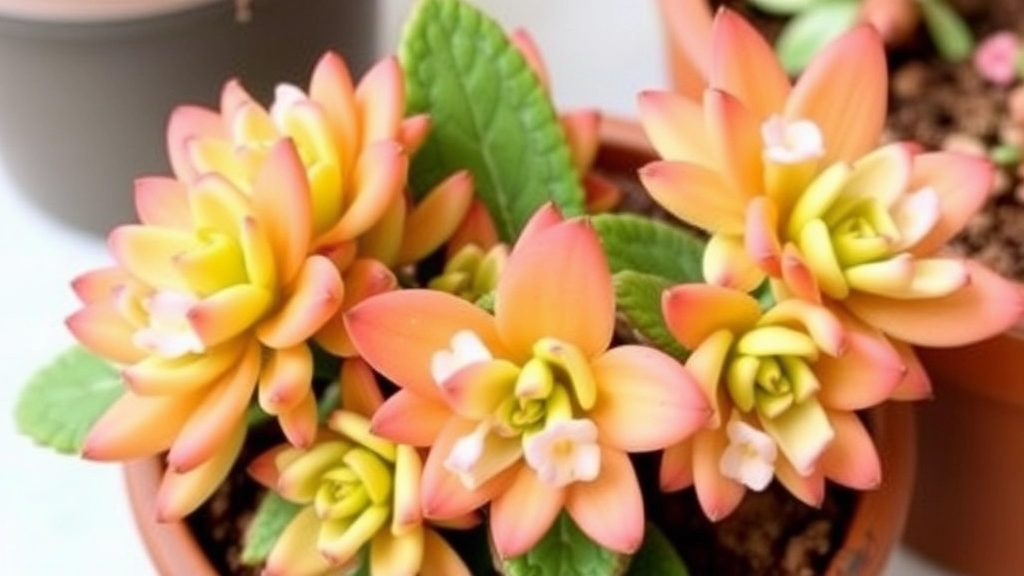Curious about the Kalanchoe Delagoensis Mother of Millions?
This fascinating plant, known for its rapid propagation and unique characteristics, can be a delightful addition to your indoor or outdoor garden. I’ll guide you through its care, from ideal light conditions to watering and soil requirements. Understanding its invasive nature and toxicity is crucial for safe and successful cultivation.
Characteristics of Kalanchoe Delagoensis
This resilient succulent thrives in bright, indirect light and requires minimal watering, making it perfect for busy plant enthusiasts. Its ability to produce numerous plantlets explains its nickname, “Mother of Millions.” Stay tuned as we explore the best practices for growing and maintaining this remarkable plant.
Characteristics of Kalanchoe Delagoensis
When considering the unique features of Kalanchoe Delagoensis, also known as Mother of Millions, many questions arise. You might wonder about its appearance, growth patterns, and overall care requirements.
Kalanchoe Delagoensis is a succulent plant that stands out with its striking characteristics.
Key Features:
- Leaf Structure: The leaves are elongated, fleshy, and can grow up to 15 cm long. They are often serrated at the edges, giving them a distinctive look.
- Growth Habit: This plant can reach heights of up to 1 metre, forming a bushy appearance that can be quite eye-catching.
- Flowers: The plant produces small, tubular flowers that can range in colour from pale green to yellow. These flowers typically bloom in clusters, adding to its visual appeal.
- Reproduction: One of the most notable traits is its ability to produce plantlets along the edges of its leaves. These tiny offsets can easily root and develop into new plants, leading to its nickname.
As you explore the characteristics of Kalanchoe Delagoensis, it becomes clear that this plant is both beautiful and resilient. For more detailed care instructions, check out this essential care guide. Additionally, if you’re interested in other unique varieties, you might find the 150 species of Kalanchoe quite fascinating.
Best Light Conditions for Growth
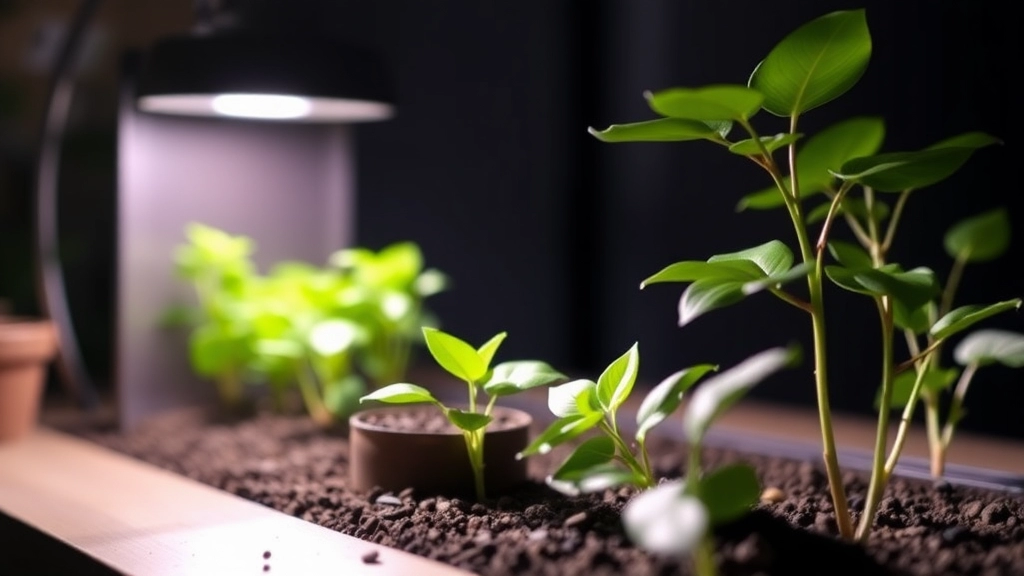
So, you’ve got your Kalanchoe Delagoensis, also known as the Mother of Millions, and now you’re wondering about the best light conditions for it to thrive.
Let’s face it, no one wants a sad, leggy plant, right?
Bright, Indirect Light is Key
Kalanchoe Delagoensis loves bright, indirect sunlight. Here’s what you need to keep in mind:
- Location: A south or west-facing window is ideal.
- Direct Sunlight: Too much direct sun can scorch those lovely leaves.
- Shade: If you notice your plant stretching towards the light, it’s a sign it needs a brighter spot.
Indoor vs. Outdoor Light
If you’re growing it indoors, consider these tips:
- Near a Window: Place it close to a window but not directly in the sun’s rays.
- Artificial Light: If natural light is scarce, use grow lights.
For outdoor cultivation:
- Partial Shade: It can handle some direct sunlight, but too much can be harmful, especially during the hottest parts of the day.
Seasonal Changes
Keep in mind that light conditions can change with the seasons.
- Winter: You might need to move your plant closer to the window as days get shorter.
- Summer: Ensure it’s not getting too much direct light during peak hours.
Watering Guidelines for Mother of Millions
When it comes to caring for Kalanchoe Delagoensis, or the Mother of Millions, one of the most frequent concerns is watering. Overwatering can lead to root rot, while underwatering can cause the plant to wilt. Striking the right balance is key to ensuring its health and vitality.
Soil Requirements for Optimal Growth
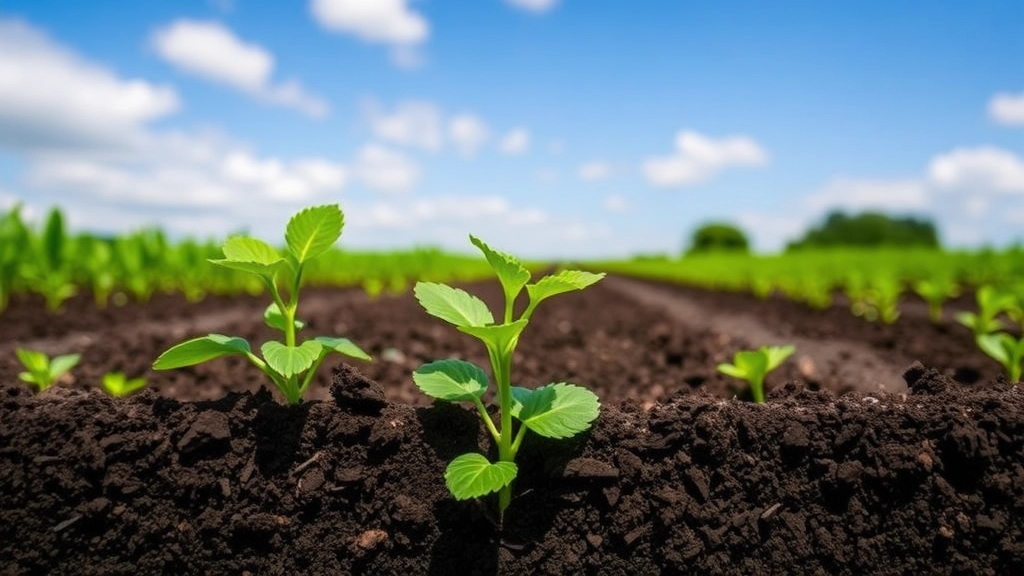
When it comes to growing Kalanchoe Delagoensis, the right soil is crucial. Many plant enthusiasts often wonder, “What kind of soil will help my Mother of Millions thrive?”
Ideal Soil Composition
Kalanchoe Delagoensis prefers well-draining soil that mimics its native environment. Here are the key components to consider:
- Cactus Mix: A commercial cactus or succulent mix is often ideal.
- Perlite or Pumice: Adding these materials improves drainage.
- Organic Matter: Incorporating a small amount of compost can provide essential nutrients.
pH Levels
Maintaining the right pH level is essential for optimal growth. Kalanchoe thrives in slightly acidic to neutral soil, ideally between 6.0 and 7.0.
Container Considerations
If you’re growing your Kalanchoe in pots, ensure that:
- Drainage Holes: Containers should have adequate drainage to prevent root rot.
- Size: Choose a pot that allows for growth but isn’t excessively large.
Tips for Soil Maintenance
- Avoid Heavy Soils: Steer clear of dense garden soils that retain too much moisture.
- Repotting: Consider repotting every couple of years to refresh the soil and promote healthy growth.
Propagation Techniques: Plantlets and Cuttings
When it comes to expanding your Kalanchoe Delagoensis collection, understanding propagation techniques is key. Many enthusiasts often wonder how to effectively propagate this plant, especially given its unique characteristics.
Plantlets: Nature’s Gift
One of the most fascinating aspects of Kalanchoe Delagoensis is its ability to produce plantlets on the edges of its leaves. These tiny plants are ready to grow, making propagation straightforward.
- Identify Healthy Leaves: Look for mature leaves that are free from blemishes.
- Gently Remove: Carefully detach the leaf, ensuring that plantlets remain intact.
- Let Them Callous: Place the leaves in a dry, shaded area for a few days. This helps prevent rot.
- Plant in Soil: Once calloused, position the leaf on top of well-draining soil and lightly press it down.
Cuttings: A Reliable Method
If you prefer using cuttings, this method is equally effective. Here’s how to do it:
- Select a Stem: Choose a healthy stem with several leaves.
- Make the Cut: Use a clean, sharp knife to cut the stem just below a leaf node.
- Allow to Dry: Similar to plantlets, let the cutting dry for a few days to form a callous.
- Plant in Soil: Insert the cutting into well-draining soil, ensuring it stands upright.
Care After Propagation
After propagation, it’s crucial to provide the right environment for your new plants:
- Light: Place them in bright, indirect sunlight.
- Water: Water sparingly until you see new growth.
- Humidity: Keep humidity levels moderate to encourage rooting.
These techniques not only help you grow more plants but also give you the chance to share this beautiful species with friends and family. For more detailed care tips, check out our Kalanchoe Mother of Thousands Care Guide and learn about the Kalanchoe Panamensis Propagation Guide.
Managing the Invasive Nature of Kalanchoe Delagoensis
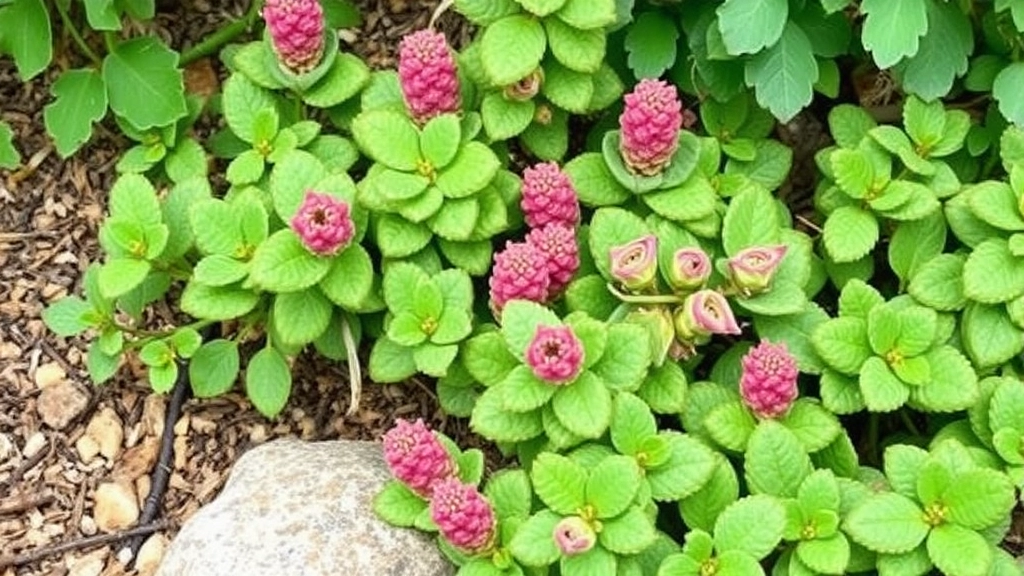
So, you’ve fallen for the charm of Kalanchoe Delagoensis, also known as Mother of Millions. But here’s the catch: it’s a bit of a wild child.
Why It Matters
If you’re not careful, this beauty can take over your garden or even your home.
- Regular Monitoring: Check your plants often. If you see little plantlets popping up where they shouldn’t be, act fast!
- Containment: Use pots instead of planting directly in the ground. This keeps the spread limited.
- Deadheading: Snip off those flowers before they go to seed. This helps cut down on new plantlets.
- Physical Removal: If you spot unwanted growth, pull it out by the roots. Don’t let it get a stronghold!
- Mulching: A thick layer of mulch can help suppress unwanted growth around your garden.
Community Awareness
Engage with your neighbours. Share your experiences and tips. A united front can really help manage this plant’s spread.
The Bigger Picture
Understanding its invasive nature is crucial. You want to enjoy its beauty without letting it run rampant.
Temperature and Humidity Preferences
When it comes to nurturing Kalanchoe Delagoensis, understanding its temperature and humidity preferences is crucial for optimal growth.
Fertilization and Pruning Practices
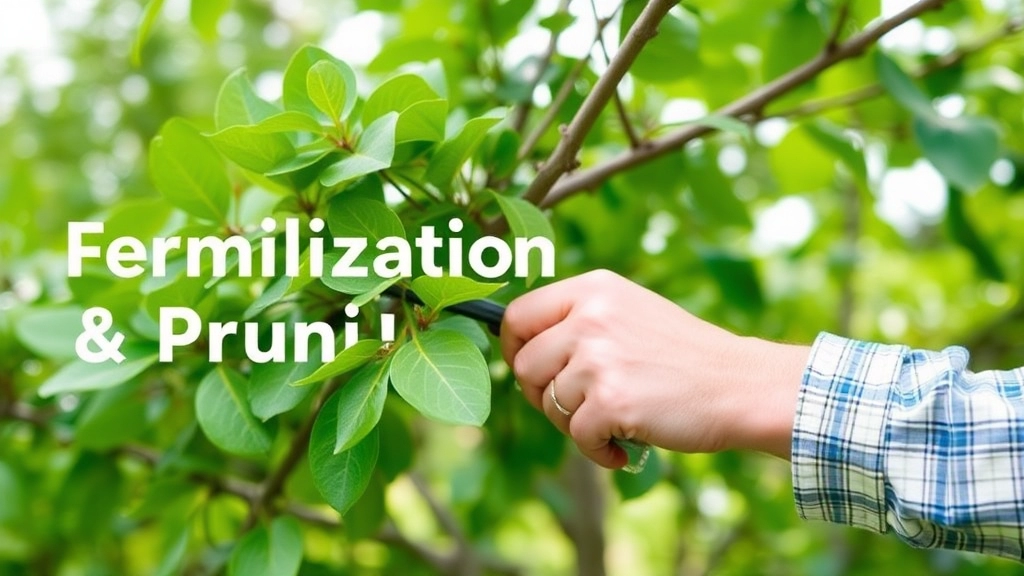
So, you’ve got your Kalanchoe Delagoensis thriving, and now you’re wondering how to keep it looking its best.
Fertilization Tips
Feeding your Mother of Millions can make a real difference in its growth. Here’s how to get it right:
- Frequency: Fertilize every 4-6 weeks during the growing season (spring and summer). This gives your plant the nutrients it craves.
- Type: Use a balanced, water-soluble fertilizer (like a 10-10-10) diluted to half strength. This keeps it happy without overwhelming it.
- Signs of Need: If you notice slower growth or pale leaves, it might be time for a feed.
Pruning Practices
Pruning is like giving your plant a little haircut. It keeps it healthy and encourages new growth. Here’s how to do it:
- Timing: Prune in spring, just before the growing season kicks off.
- What to Remove: Snip off any dead or yellowing leaves. This helps the plant focus its energy on new growth.
- Encouraging Fullness: If you want a bushier look, pinch back the tips of the stems. This encourages branching.
- Tools: Always use clean, sharp scissors or pruning shears to avoid any potential infections.
Toxicity to Pets and Humans: What You Need to Know
As we explore the fascinating world of Kalanchoe Delagoensis, it’s crucial to address a pressing concern for many plant enthusiasts: its toxicity.
Understanding the Risks
Kalanchoe Delagoensis, commonly known as Mother of Millions, is not just a beautiful addition to your home or garden; it also poses certain risks.
- Toxic Components: The plant contains compounds known as bufadienolides, which can be harmful if ingested.
- Symptoms of Toxicity: If pets or humans consume parts of the plant, they may experience symptoms such as:
- Vomiting
- Diarrhoea
- Abdominal pain
- Lethargy
- Pets at Risk: Cats and dogs are particularly susceptible. If you suspect your pet has ingested any part of the plant, consult a veterinarian immediately.
Safety Precautions
To ensure a safe environment around Kalanchoe Delagoensis, consider these simple measures:
- Placement: Keep the plant out of reach of pets and small children.
- Education: Inform family members about the plant’s toxicity to avoid accidental ingestion.
- Alternatives: If you have pets, consider non-toxic alternatives that still bring beauty to your space.
By being aware of these risks, you can enjoy the beauty of Mother of Millions while keeping your loved ones safe. For more detailed care tips, you can refer to our comprehensive guide.
Indoor vs. Outdoor Cultivation: What’s Best for Kalanchoe Delagoensis?

So, you’re pondering whether to keep your Kalanchoe Delagoensis indoors or let it bask in the great outdoors. Trust me, you’re not alone in this dilemma.
Indoor Cultivation: The Cozy Choice
- Controlled Environment: One of the biggest perks of growing indoors is control. You can easily manage light, temperature, and humidity.
- Protection from Pests: Indoor plants are less likely to face pest invasions, making it easier to keep your Mother of Millions healthy.
- Space-Saving: If you’re short on outdoor space, potting your Kalanchoe is a fantastic option.
However, there are a few things to keep in mind:
- Light Needs: Make sure it gets plenty of bright, indirect sunlight. A south-facing window is ideal.
- Air Circulation: Ensure good airflow to prevent mould and rot, especially in humid environments.
Outdoor Cultivation: The Natural Way
On the flip side, growing Kalanchoe Delagoensis outdoors has its own set of benefits:
- Natural Light: Nothing beats the sun! Your plant will thrive in full sun, which is essential for its growth.
- Space to Spread: If you have the room, Kalanchoe can spread its wings—well, its leaves, anyway.
- Less Maintenance: Nature takes care of a lot. Rain and natural elements can often provide what your plant needs.
But, outdoor growing isn’t without challenges:
- Invasiveness: Be cautious; Kalanchoe Delagoensis can spread rapidly and may outcompete local flora.
- Pest Risks: Outdoor plants are more vulnerable to pests and diseases. Regular checks are a must.
Troubleshooting Common Growth Issues
Kalanchoe Delagoensis, or Mother of Millions, can sometimes present challenges in its care. Understanding these common growth issues is essential for maintaining a healthy plant.
FAQs About Kalanchoe Delagoensis (Mother of Millions)
What are the best light conditions for Kalanchoe Delagoensis?
Kalanchoe Delagoensis thrives in bright, indirect sunlight. A south or west-facing window is ideal. Too much direct sunlight can scorch the leaves, while insufficient light can cause the plant to stretch towards the light source.
Can I grow Kalanchoe Delagoensis indoors?
Yes, you can grow Kalanchoe Delagoensis indoors. Place it near a window with bright, indirect sunlight. If natural light is scarce, consider using grow lights. Ensure good air circulation to prevent mold and rot.
What type of soil is best for Kalanchoe Delagoensis?
Kalanchoe Delagoensis prefers well-draining soil. A commercial cactus or succulent mix is ideal. Adding perlite or pumice can improve drainage, and a small amount of compost can provide essential nutrients.
How often should I fertilize my Kalanchoe Delagoensis?
Fertilize your Kalanchoe Delagoensis every 4-6 weeks during the growing season (spring and summer) using a balanced, water-soluble fertilizer diluted to half strength.
How do I manage the invasive nature of Kalanchoe Delagoensis?
To manage its invasiveness, regularly monitor your plants, use pots instead of planting directly in the ground, deadhead flowers before they go to seed, and physically remove unwanted growth. Mulching can also help suppress unwanted growth.
When should I prune my Kalanchoe Delagoensis?
Prune your Kalanchoe Delagoensis in the spring, just before the growing season. Remove any dead or yellowing leaves and pinch back the tips of the stems to encourage branching and fullness.
Is Kalanchoe Delagoensis better grown indoors or outdoors?
Both options have their benefits. Indoors, you can control light, temperature, and humidity, and protect the plant from pests. Outdoors, the plant benefits from natural light and more space to spread. However, outdoor plants may face higher risks of invasiveness and pest issues.
What pH level is ideal for Kalanchoe Delagoensis soil?
Kalanchoe Delagoensis thrives in slightly acidic to neutral soil, ideally between 6.0 and 7.0 pH.
How can I ensure proper drainage for my Kalanchoe Delagoensis?
If growing in pots, ensure they have adequate drainage holes. Avoid using dense garden soils that retain too much moisture. Consider repotting every couple of years to refresh the soil.
How do seasonal changes affect Kalanchoe Delagoensis?
Light conditions can change with the seasons. In winter, move your plant closer to the window as days get shorter. In summer, ensure it’s not getting too much direct light during peak hours to avoid scorching the leaves.
References
-
Kalanchoe Light Requirements
-
Growing Kalanchoe Delagoensis
-
Types of Succulents: Kalanchoe Delagoensis
